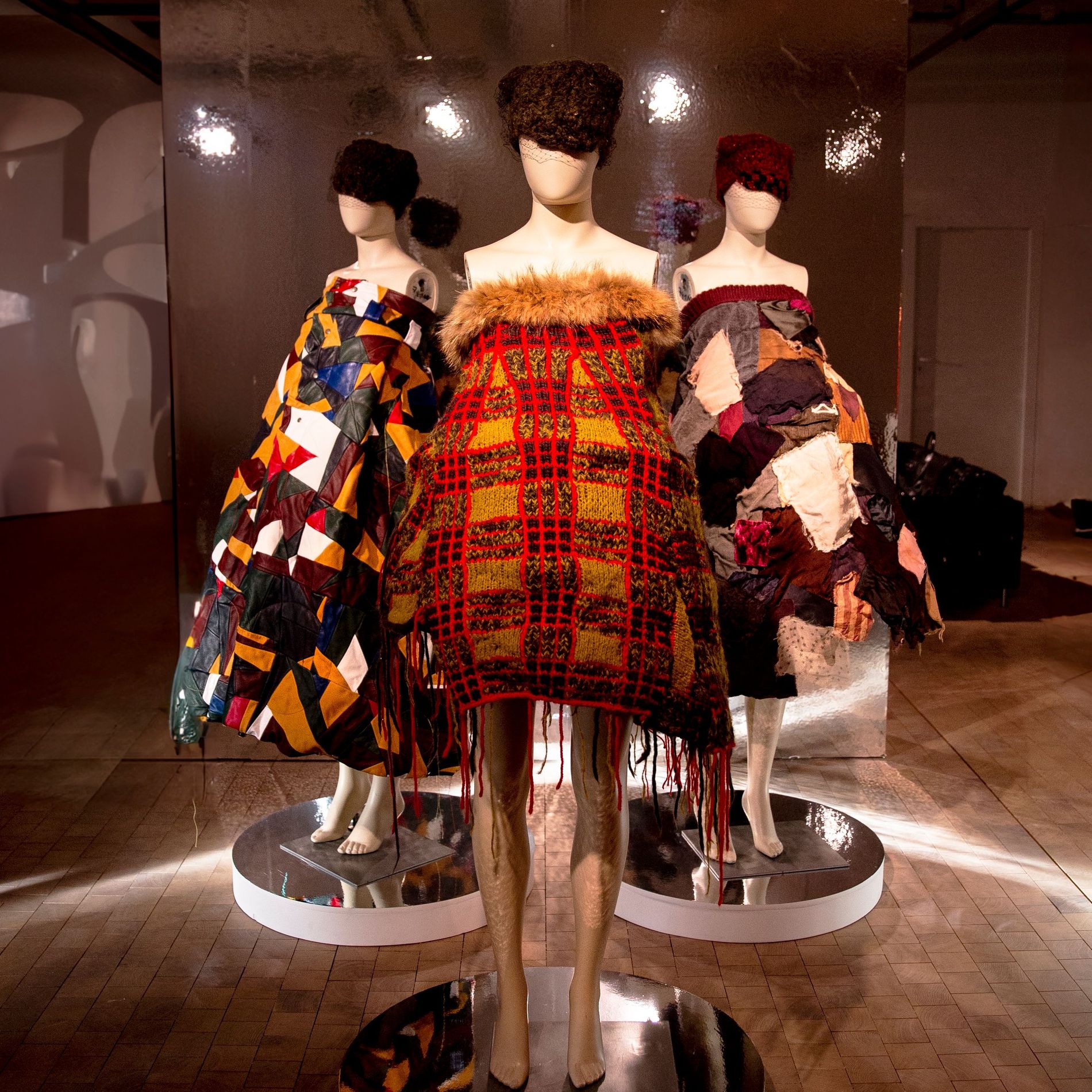Led by curator Ane Lynge-Jorlén, the new Paris exhibition ‘Liminal Objects’ showcases eight visionary Nordic designers who are reshaping the fashion landscape
Curator Ane Lynge-Jorlén has never taken the opportunity to explore the impact of fashion lightly. Adding to her impressive oeuvre, ‘Liminal Objects’, a newly-opened, free-of-charge exhibition at Le Bicolore in Maison du Danemark on Champs-Élysées in Paris, investigates the fine line between art and fashion walked by the most exciting emerging Nordic designers.
A showcase of contemporary critical fashion, ‘Liminal Objects’ ties together eight rising and established Scandinavian voices that challenge classic definitions of what fashion can, should and could be. The exhibition captures fashion's unique ability to convey meaning and symbolism, interrogating the role that materials, functions, bodies and identities play within fashion and art.
In a speech marking the exhibition's recent opening, Lynge-Jorlén spoke of fashion as a safe house for otherness, endorsing its place as an artistic and critical practice, and highlighting its potential to push and change agendas.
Throughout the artifacts on display, selected by the Nordic designers to be showcased (along with one specially commission piece), ‘Liminal Objects’ poses as many lasting questions as it ventures to answer. “There are three main perspectives that I wanted the show to express,” says Lynge-Jorlén of her intention with the exhibition. “A new craftsmanship has emerged that uses invaluable and upcycled, conventional and everyday objects as material for new shapes and silhouettes," she says. "This strand scrutinises the value of things and offers creative critique of the fashion system. Another perspective is how fashion, known for idealisation and stereotyping of bodies, gender and identities, is also safe space for otherness, fluidity and ambiguity, and that transgressional stages of bodies are universal,” she goes on.
“Finally, the exhibition is concerned with critical storytelling embedded in the clothes that bridge the past with the future. Oppressive regimes and thought police are not a thing of the past, and what we wear and how the clothes are made can be acts of rebellion and empowerment.”
Related: “It’s a dream”: Avavav's Beate Karlsson on Rihanna wearing its SS24 post-it covered showpiece
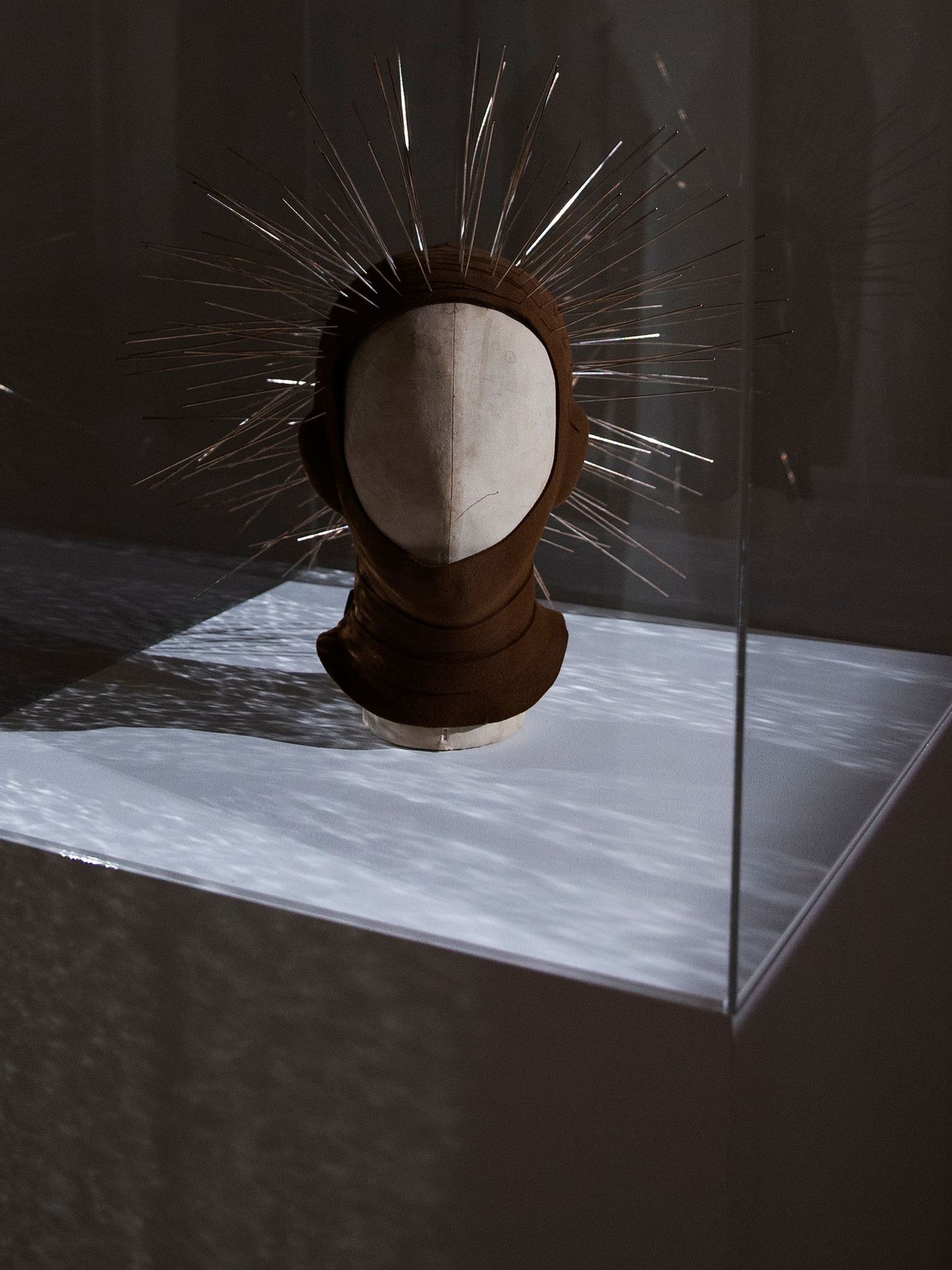
Jenny Hytonen’s headpiece of long aluminum spikes, made in collaboration with Maison Michel 19 M for Festival Hyères.
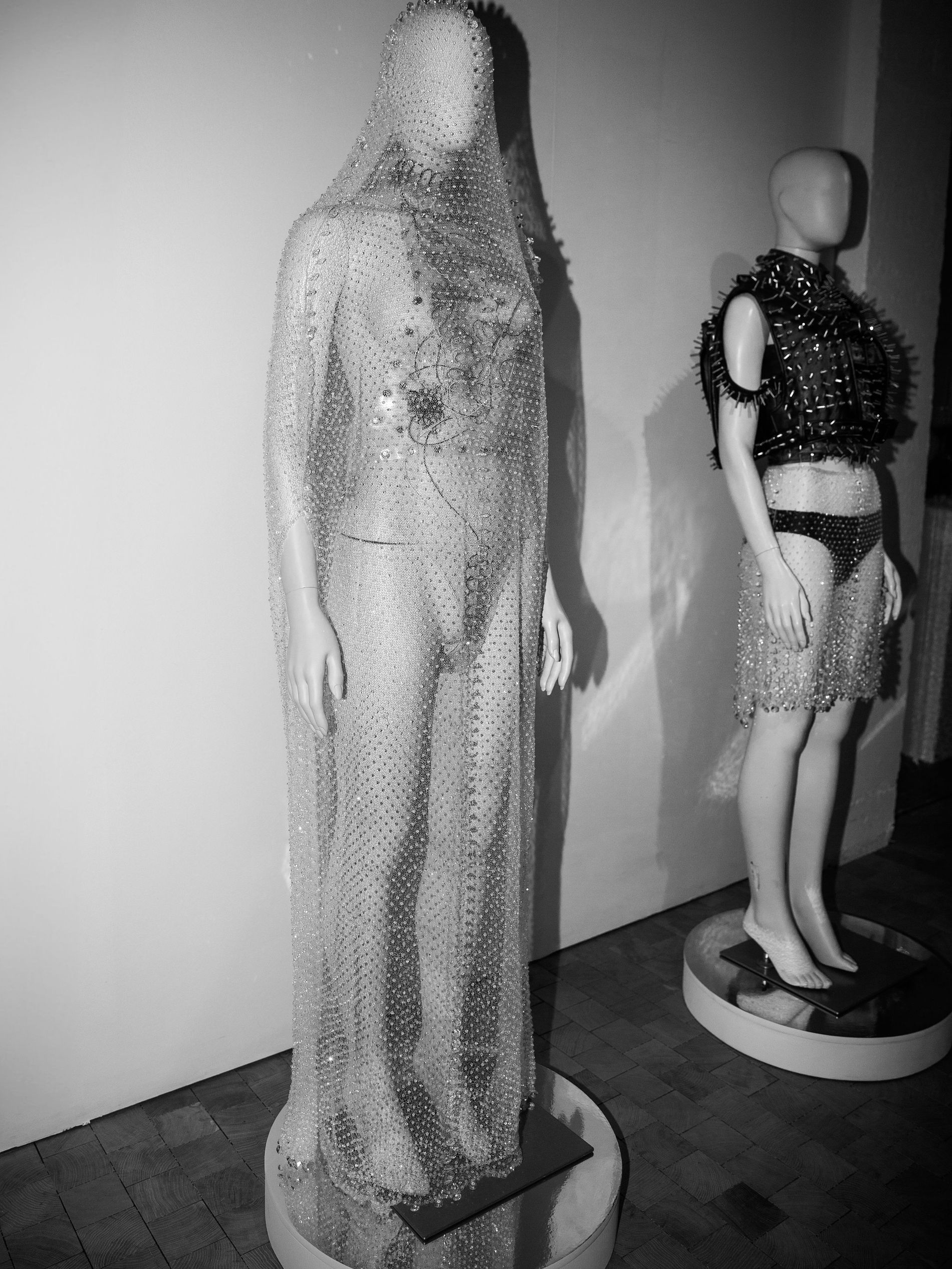
Henny Hytonen’s Cyborg Bride - a knitted veil made using fishing line with over 20,000 glass beads. Underneath the veil sits an LED plate with pulsating light that detects and showcases the wearer’s heartbeat .
The exhibition offers immediate impact through the work of Finnish designer Jenny Hytonen – namely her headpiece of long aluminium spikes, made in collaboration with Maison Michel 19 M for Festival Hyères. Elsewhere, visitors will observe her impressive Cyborg Bride - a knitted veil made using fishing line with over 20,000 glass beads placed individually during the knitting process. Underneath the veil sits an LED plate with pulsating light that detects and showcases the wearer’s heartbeat.
‘Liminal Objects’ also comprises two looks from Swedish fashion designer Petra Fagerstrom that touch upon the ability of fashion to capture dreams, as much as it can express history and one’s own past. Inspired by her grandmother, who was a parachutist in the USSR, the work juxtaposes military surplus garments, upcycled parachute gear and floral nightgowns exposing her grandmothers dreams of escaping to California. Fagerstrom's skilled used of lenticular pleating and exceptional finishes have earmarked the designer as a fascinating new voice in the fashion landscape.
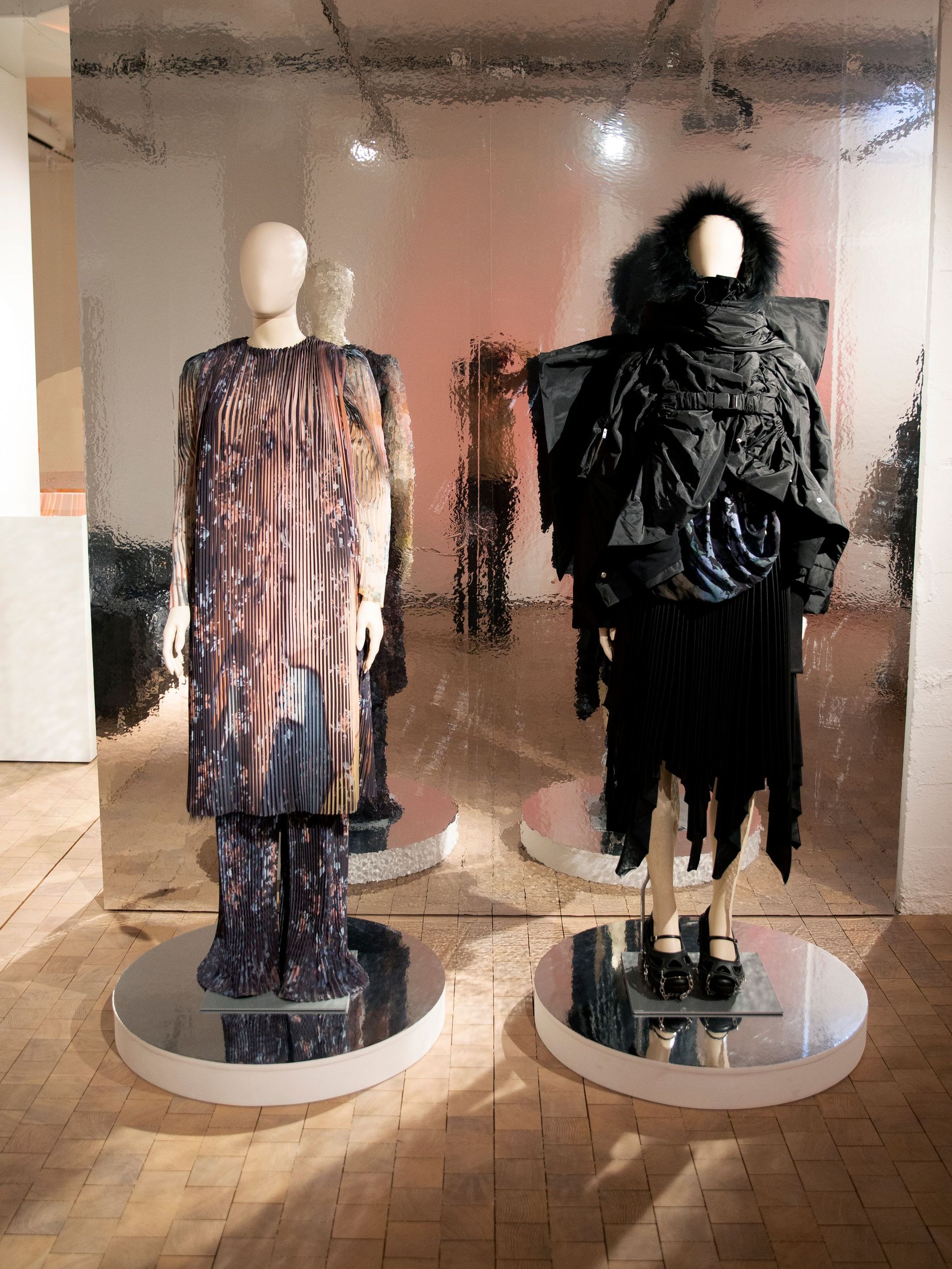
The designs of Petra Fagerstrom displayed touch were inspired by the her grandmother, who was a parachutist in the USSR.
This idea of clothing as storytelling and symbolism carries through into Ellen Hodakova’s instantly recognisable works. Her showpiece ‘Spoon Dress’ was inspired by the adage ‘being born with a silver spoon in your mouth’, while the ‘Pen Jacket’ comments on social norms and the value of everyday things. Showcasing as part of the official Paris Fashion Week calendar, Hodakova has become a keenly observed brand within the industry whose own rise has never strayed from her original purpose and values.

Ellen Hodakova's ‘Spoon Jacket’ is inspired by the saying ‘being born with a spoon in your mouth’.
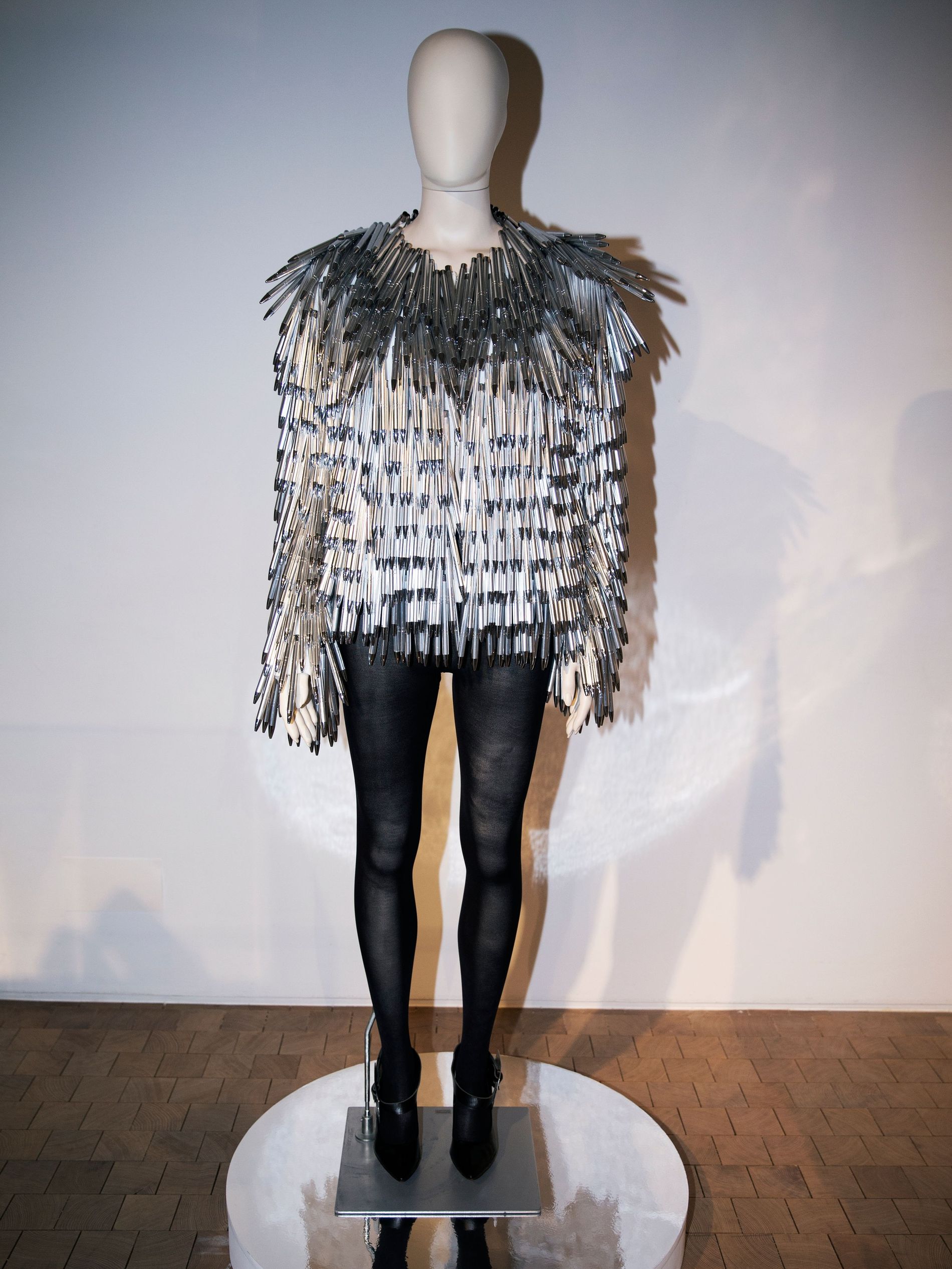
The ‘Pen Jacket’ by Ellen Hodakova comments on social norms and the value of everyday things.
For Lynge-Jorlén, the exhibition's title of ‘Liminal Objects’ was the most fitting descriptive to the mammoth conversation she had unfolded; a task not easy to undertake, but neither sought to be a straightforward question either. “Liminality refers to being on both sides, in a transitional stage, on the threshold between two worlds and the co-presence of opposites. Liminality reflects the status of the works on display. They are conceived on the threshold of art and fashion by practitioners that challenge the norms of what is expected of fashion, and the meanings of the works are complex and allow for ambiguity.”
Liminality reflects the status of the works on display. They are conceived on the threshold of art and fashion by practitioners that challenge the norms of what is expected of fashion, and the meanings of the works are complex and allow for ambiguity.
Ane Lynge-Jorlén, curate of the ‘Liminal Objects’ exhibition
It is exactly this tightrope that Danish designer Louise Lyngh Bjerregaard has walked throughout her whole career, not only blurring the boundaries between Couture and ready-to-wear, but also uniting fashion, art and subversion. Her works on display are unapologetic and disobedient, upcycling materials in unexpected compositions into silhouettes that demand space through Asymmetrical forms. Her work titles range from the descriptive: ‘Multi Scrap Patchwork Crinoline with Knitted Waistband’ to the abstract ‘No Bitcoins In Space Leather Ball Gown’. This
dichotomy only emphasises her aim: to hold no barriers up to expression.
Fredrik Tjærandsen is a Norwegian creator toying with space within his works that sit at the intersection of conceptual design, art and fashion. His signature inflatable latex body “bubbles” that engulf the wearer are manifestations of memory - works that envelope in moments of bliss. Both strange and magnificent, Tjærandsen proposes a radically different definition of what are clothes - that they too can be mental states as much as fashion.
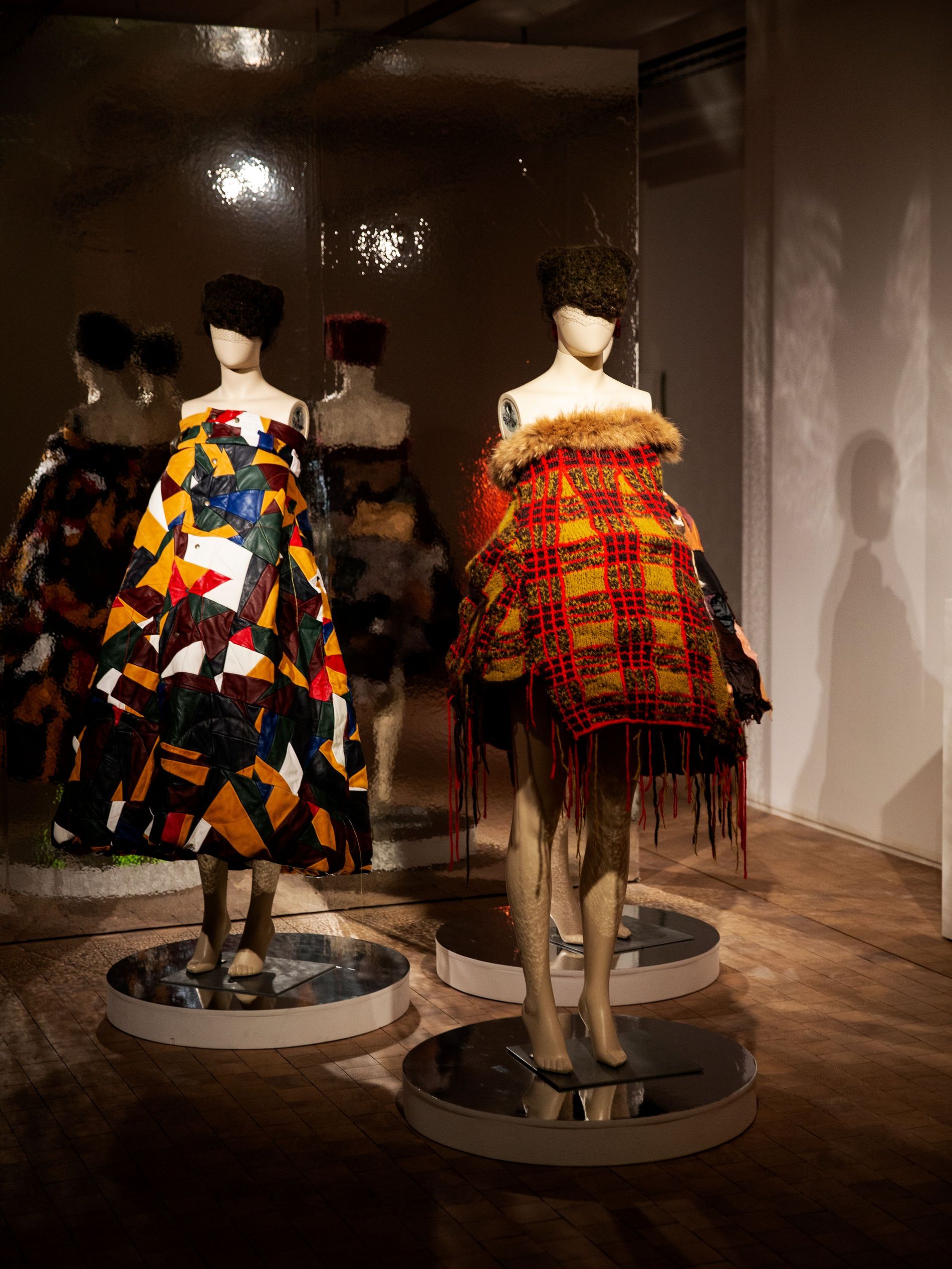
The unexpected and subversive works of Danish designer Louise Lyngh Bjerregaar.
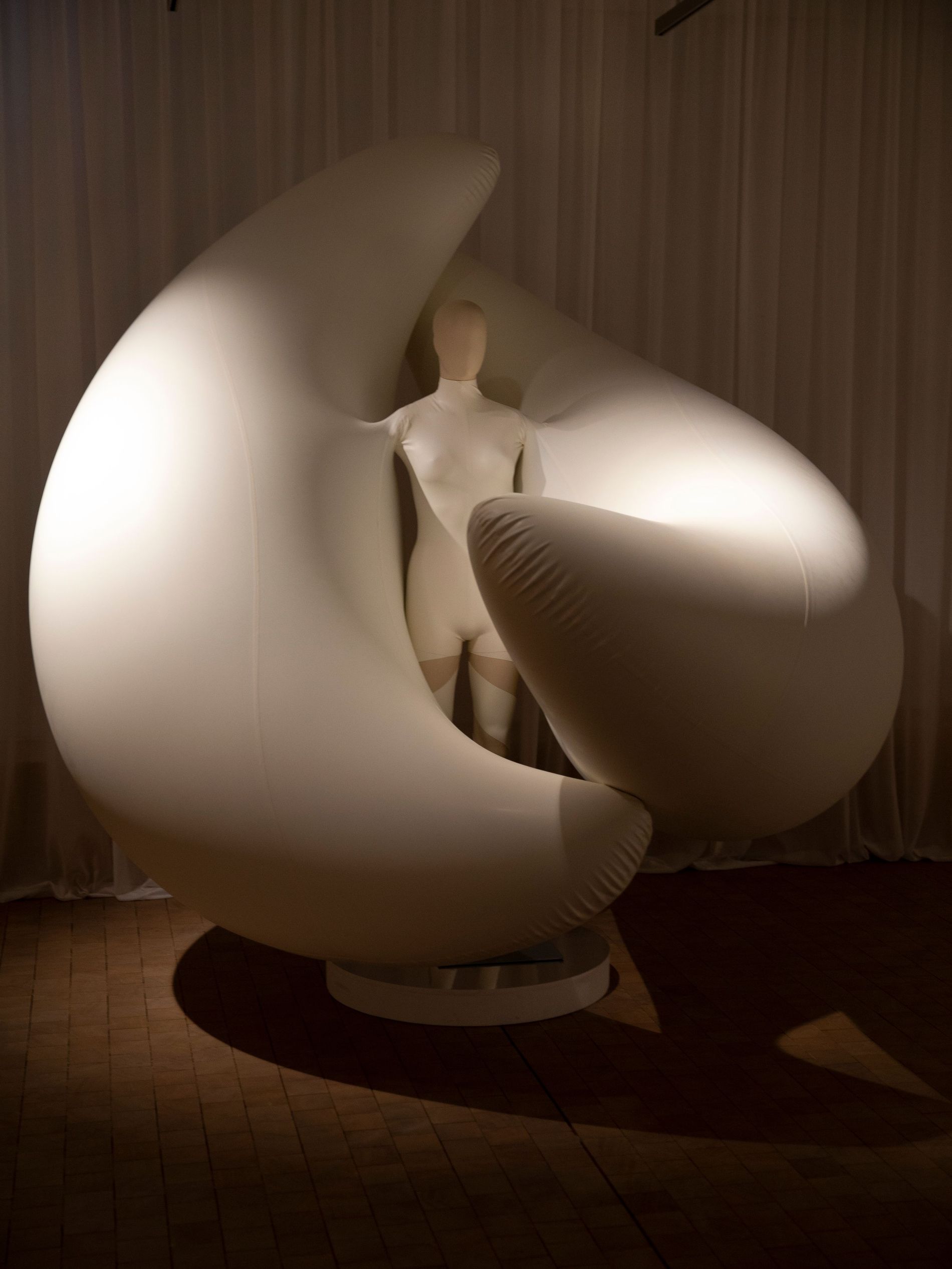
Norwegian Frederik Tjærandsen's instantly recognisable latex body “bubbles” .
Ida-Simone Brerup, the Danish designer and artist based in Amsterdam, carries similar values in her works, exposing social taboos and the impact of emotion through her works that act as sculptures and instigators of conversations around body image and and its subsequent symbolism.
Closing the showcase is a performance installation from multimedia artist Cassie Augusta Jørgensen, who presents arts’ potential to inhabit various formats and guises - in an uncertain future all order must be examined, and fantasy, history and cultural projections entwine in an ambiguous fold.
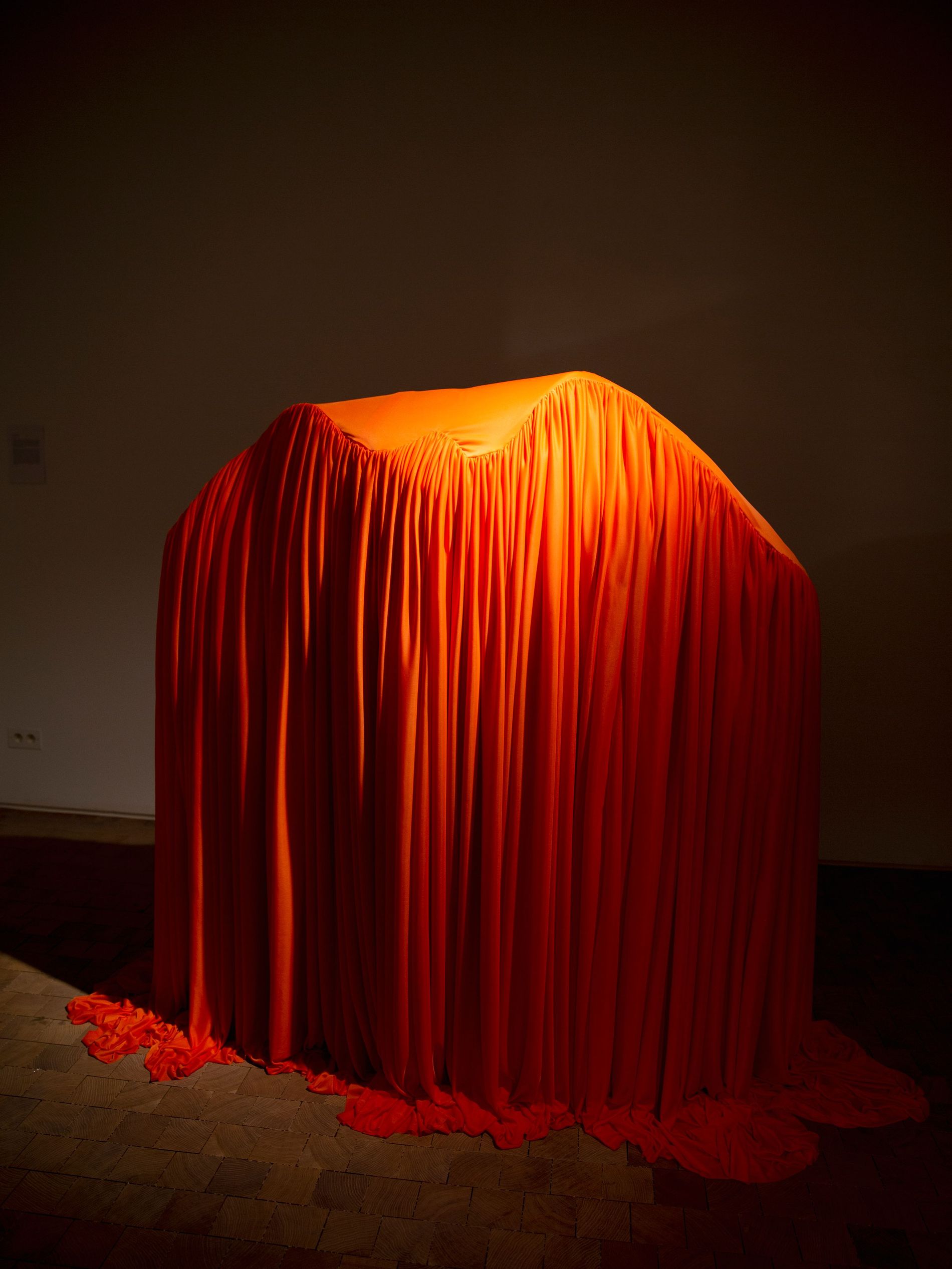
One of the symbolic works by Danish, Amsterdam-based designer Ida-Simone Brerup.
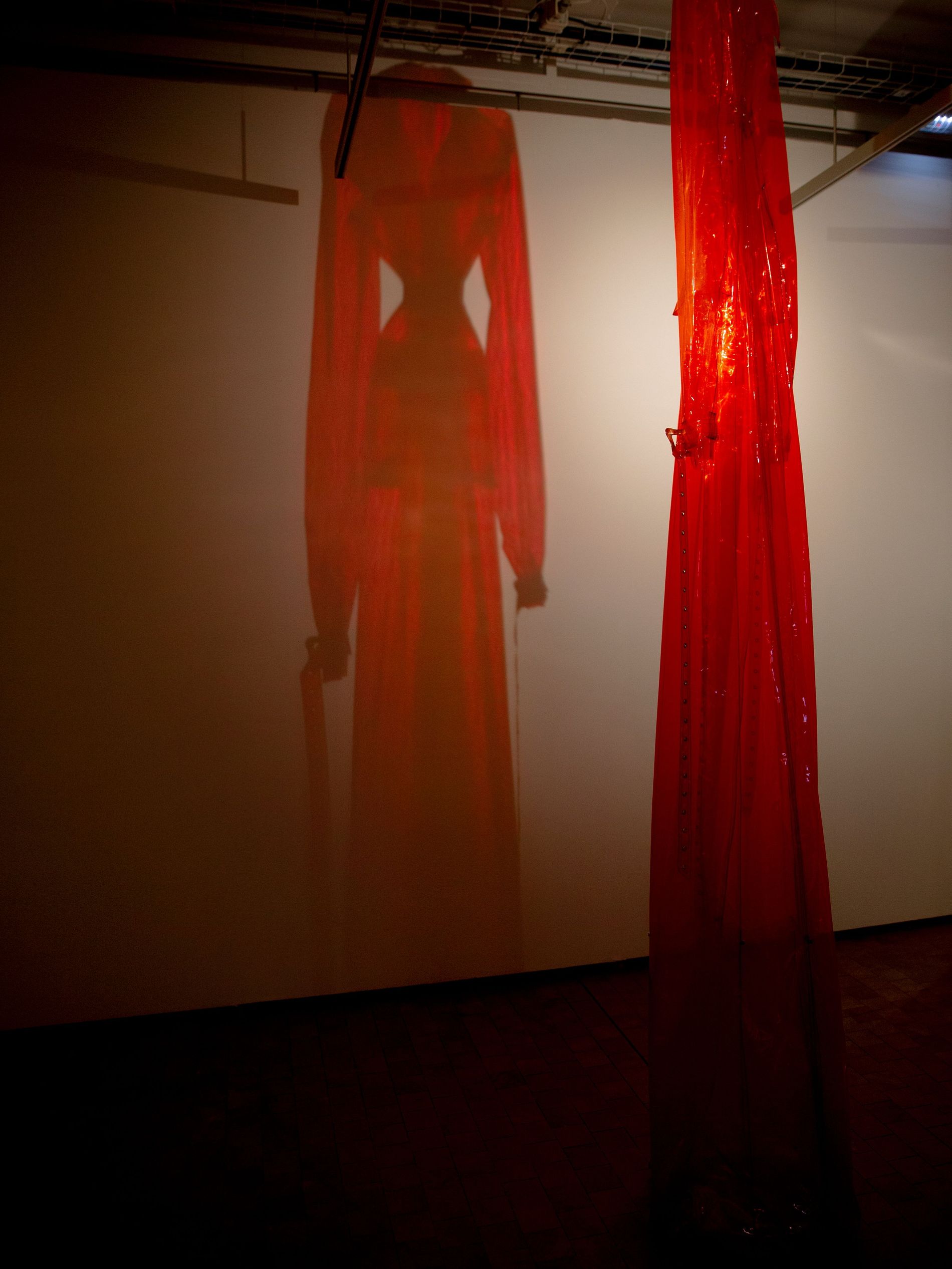
Multimedia artist Cassie Augusta Jørgensen.
Humour is not lost in this exhibition, with the commissioned work by Kristine Sehested-Blad presenting a couch made of upcycled black leather bags. The mosh pit of stories that the bags carry in their own history, and their final form (for now) of a sofa express fashion’s ability to shape shift into different personas and a variety of ideals. Or maybe that sometimes it’s ok to poke fun at aspects for the sheer sake of upending conformity and letting an air of expressive bizarreness penetrate an installation – a reminder fashion or art should not always aim to please.
Fashion must continue to provoke its own definitions, and Liminal Objets proposes alternate visions for the cross-pollination as much as the friction between the potential art and fashion could cultivate together. There is an uncompromising wave echoing out of Scandinavia with its young creators: a viewpoint that must be nourished in order to ensure a varied and multi-hyphenate future for fashion.
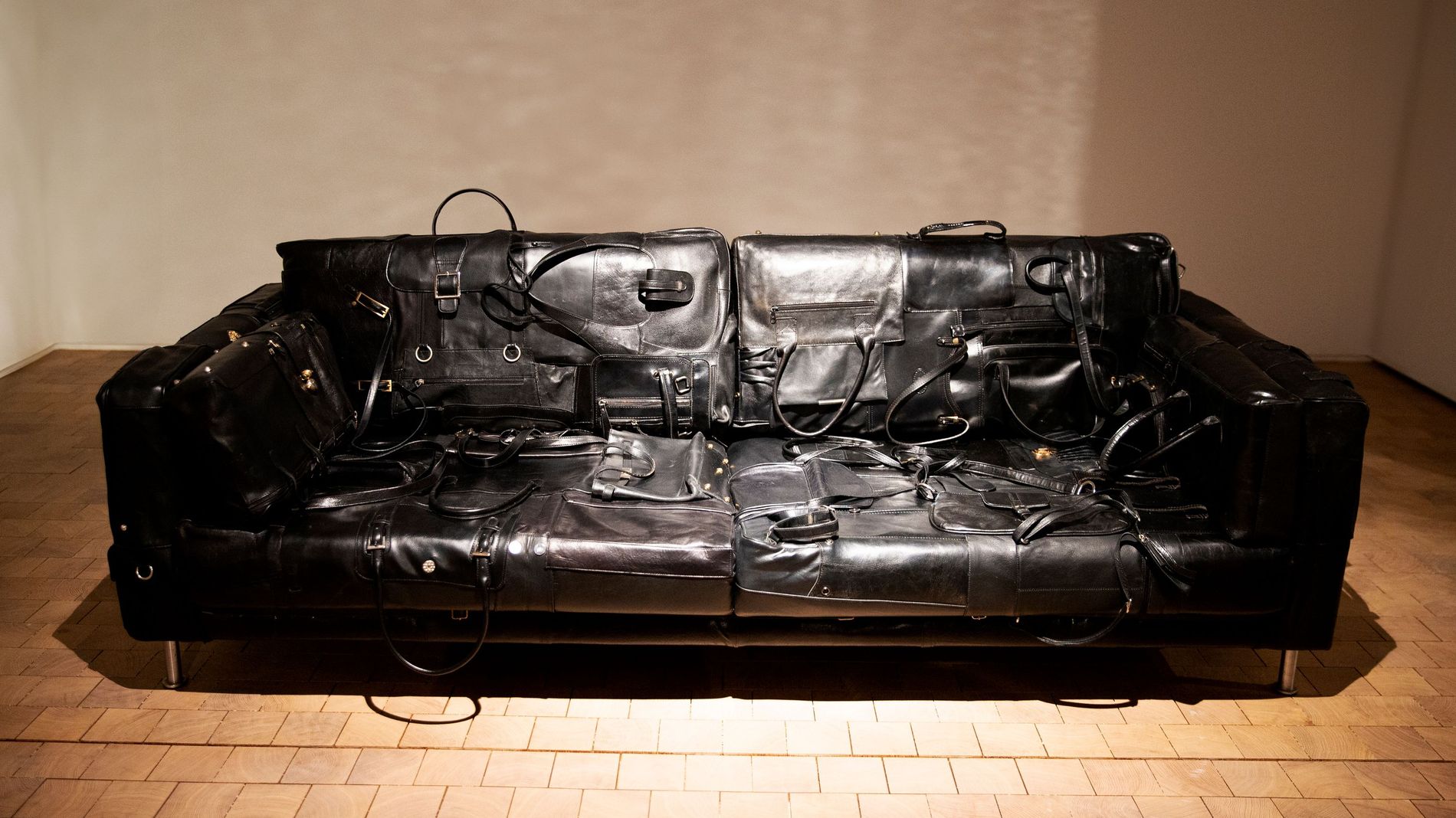
Kristine Sehested-Blad's couch made of upcycled black bags .
As Lynge-Jorlén concludes: “In a fashion context, the Nordics are traditionally much more associated with functionality, funny prints or muted colours. Experimentation has always happened at graduate level, and in recent years, much more of this has been allowed a stage after graduation. At the same time, a clear crossover has occurred between art and fashion with artists experimenting with crafts, bodies and clothes. Now, there’s a mutual fertilisation that is concerned with materiality, value, identity, otherness and unity.”
